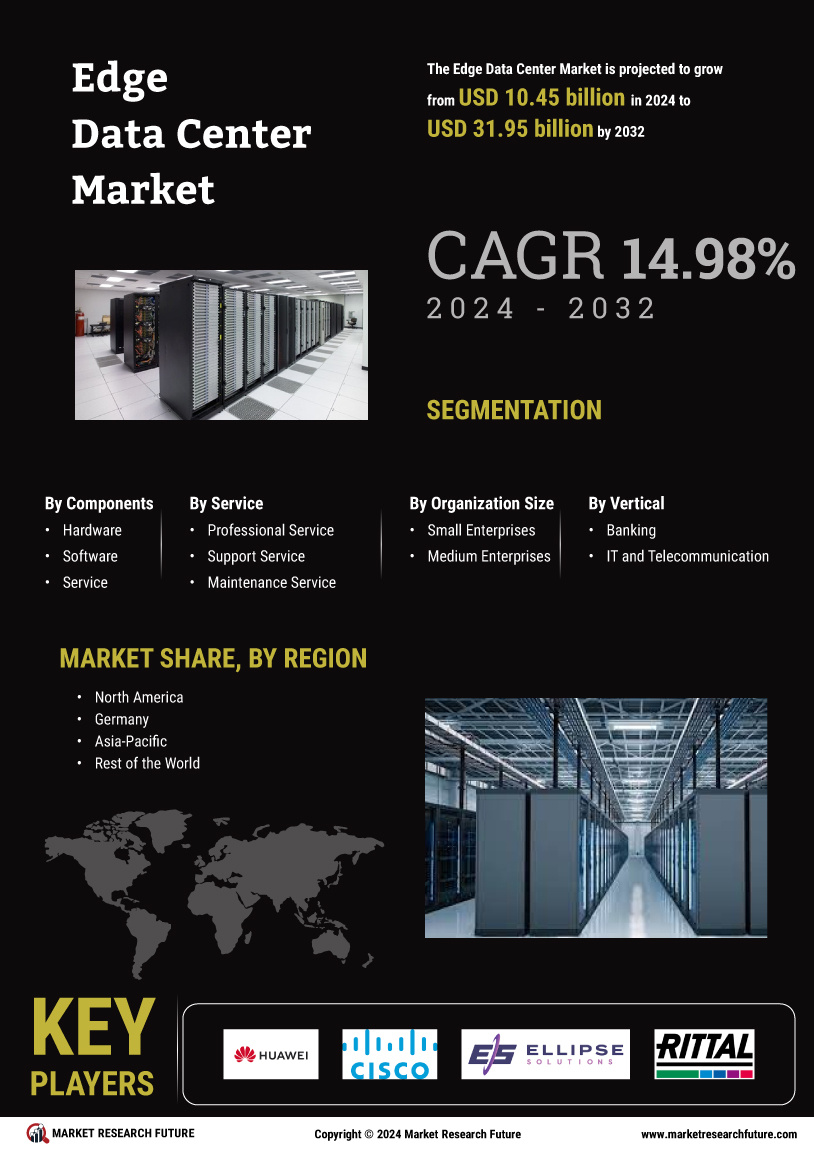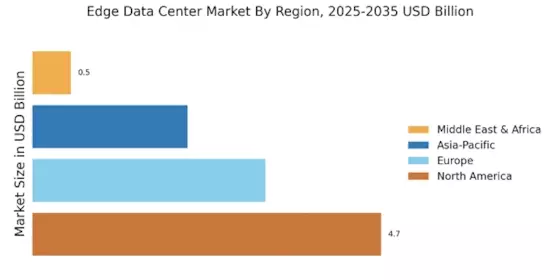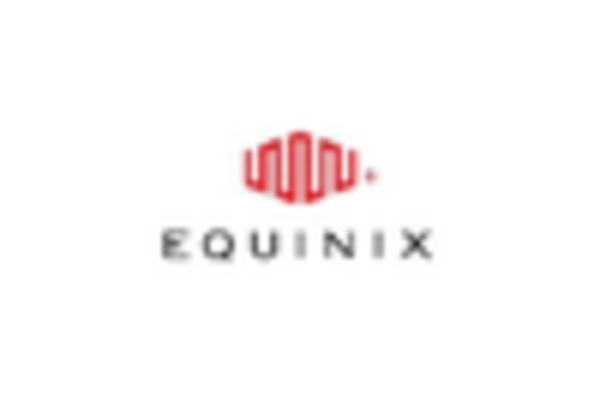Emergence of Smart Cities
The development of smart cities is emerging as a pivotal driver for the Edge Data Center Market. Urban areas are increasingly adopting smart technologies to improve infrastructure, enhance public services, and promote sustainability. Edge data centers play a vital role in supporting the vast amounts of data generated by smart city applications, such as traffic management, waste management, and public safety. As cities strive to become more efficient and responsive, the demand for localized data processing solutions is expected to rise. Reports suggest that investments in smart city initiatives could reach trillions of dollars in the coming years, thereby propelling the growth of the Edge Data Center Market. This trend underscores the importance of edge computing in facilitating the seamless operation of smart urban environments.
Demand for Real-Time Analytics
The growing need for real-time analytics is a crucial factor driving the Edge Data Center Market. Businesses across various sectors are increasingly relying on data-driven decision-making to enhance operational efficiency and customer engagement. Edge data centers facilitate real-time data processing, enabling organizations to analyze information as it is generated. This capability is particularly valuable in industries such as finance, retail, and logistics, where timely insights can lead to competitive advantages. Market Research Future indicates that the global real-time analytics market is expected to grow significantly, further fueling the demand for edge computing solutions. As organizations prioritize agility and responsiveness, the Edge Data Center Market is likely to expand to meet these evolving needs.
Rising Adoption of IoT Devices
The proliferation of Internet of Things (IoT) devices is a key driver for the Edge Data Center Market. As more devices connect to the internet, the demand for low-latency processing increases. This trend is evident in various sectors, including smart cities, healthcare, and manufacturing. According to recent estimates, the number of connected IoT devices is projected to reach 30 billion by 2030. This surge necessitates localized data processing capabilities, which edge data centers provide. By reducing the distance data must travel, these centers enhance response times and improve overall user experience. Consequently, businesses are increasingly investing in edge infrastructure to support their IoT initiatives, thereby propelling the growth of the Edge Data Center Market.
Growth in 5G Network Deployment
The ongoing rollout of 5G networks is significantly influencing the Edge Data Center Market. With 5G technology offering higher speeds and lower latency, the demand for edge computing solutions is expected to rise. The enhanced capabilities of 5G facilitate real-time data processing, which is crucial for applications such as autonomous vehicles, augmented reality, and remote healthcare. Industry analysts suggest that the global 5G market could reach a valuation of over 700 billion by 2026, driving investments in edge data centers to support this infrastructure. As businesses seek to leverage the advantages of 5G, the Edge Data Center Market is likely to experience accelerated growth, as these centers are essential for managing the increased data traffic generated by 5G applications.
Increased Focus on Data Privacy and Security
As data breaches and cyber threats become more prevalent, organizations are placing a heightened emphasis on data privacy and security. This trend is a significant driver for the Edge Data Center Market. By processing data closer to the source, edge data centers can enhance security measures and reduce the risk of data exposure during transmission. Furthermore, regulatory frameworks such as the General Data Protection Regulation (GDPR) and the California Consumer Privacy Act (CCPA) are compelling businesses to adopt more stringent data management practices. The Edge Data Center Market is thus witnessing a shift towards localized data processing solutions that align with these regulations, as organizations seek to protect sensitive information while maintaining compliance.


















Leave a Comment